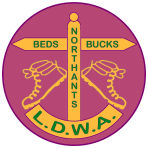Oranges and Lemons, Saturday 26th March 2022
A circular walk visiting all the churches mentioned in several versions of the Oranges and Lemons rhyme, (except St Mary and Holy Trinity Church, Bow Road, Bow which some believe is the Great Bell of Bow rather than St Mary le Bow, Cheapside). A printable version of all the information is here
Leave at 9.30am from the ‘Lovers Statue’ Meeting Place on the Grand Terrace, (south end, upper level), inside St Pancras International Station. Euston Road, London. NW12QP
Grid Ref TQ301829, OS Land Ranger Maps: 176 and 177.
Distance
The walk is approx. 17 miles if you start and finish at St Pancras Station. It would be possible to join at St Leonards Shoreditch but please tell Terry if you’re doing this.It‘s possible to leave the walk at several places – most conveniently at:
- 11.5 miles, just after St Pauls Cathedral, from St Pauls Tube station or walk west, down Ludgate Hill, to City Thameslink Station.
- 13 miles, just after St Sepulchre, from City Thameslink Station (closed Sundays but walk to Farringdon for Tube or northbound Thameslink.)
- 14.5 miles, just after St Martin in the Fields, Trafalgar Square, the last church of the walk, from Leicester Square Tube or Charing Cross station.
Other things
Please bring enough food and drink for the day. Because of the way the route pans out we’ll have two longish breaks (30 – 40 minutes); think of it as ‘first’ lunch and ‘second’ lunch! The first stop will be Stepney City Farm after about 5 miles arriving around 11.15am. There’s a cafe and loos here but we might have to queue for the café to get a drink it’s a busy place on Saturday mornings. The second is at St Pauls Cathedral with loos in the shopping centre just before, about 10.75 miles, arriving around 1.50 – 2.05pm.
Please note - public loos are few and far between, especially in the morning; please make sure you are comfortable before we set off – there aren’t any suitable woods or bushes on the route!
In between our two long breaks there can be a quick loo stop, if needed, at the Tower of London – you’ll need 50p here
After our last church at St Martin in the Fields at Trafalgar Square we’ll work our way back toward Euston Road for Euston, St Pancras and Kings Cross Stations. We may stop for a drink in a pub enroute. If you’re leaving the group before the pub, or going to another station, you’ll have to make your own way back. A route note will be available for Euston, St Pancras and Kings Cross but a London street map may be useful if you aren’t familiar with the area.
The Nursery Rhyme (with help from Google, Wikipedia and Dickon Love’s guides to London bells with apologies for any errors or mistakes!)
Oranges and Lemons is a traditional English nursery rhyme, folksong and singing game which refers to the bells of several churches and a bell foundry within, or close to, the City of London. There are various theories as to its meaning; however, there is considerable variation in the churches and lines attached to them in versions printed in the late eighteenth and early nineteenth centuries, which makes any overall meaning difficult to establish.
The identity of some of the churches is not always clear, with two claims each for the St Martin, St Clement and Bow. Whilst they may have had bells in the past, not all the churches have bells that can be used for English style change ringing now.
Probably the most familiar nursery rhyme is:
Oranges and lemons,
Say the bells of St Clement's.
You owe me five farthings,
Say the bells of St Martin's.
When will you pay me?
Say the bells at Old Bailey.
When I grow rich,
Say the bells at Shoreditch.
When will that be?
Say the bells of Stepney.
I do not know,
Says the great bell at Bow.
Here comes a candle to light you to bed,
And here comes a chopper to chop off your head!
Chip chop chip chop the last man is dead.
An earlier version has more churches and the bell foundry:
Gay go up, and gay go down,
To ring the bells of London town.
Bull's eyes and targets,
Say the bells of St Margaret's.
Brickbats and tiles,
Say the bells of St Giles'.
Halfpence and farthings,
Say the bells of St Martin's.
Oranges and lemons,
Say the bells of St Clement’s.
Pancakes and fritters,
Say the bells of St Peter's.
Two sticks and an apple,
Say the bells at Whitechapel.
Pokers and tongs,
Say the bells at St John's.
Kettles and pans,
Say the bells at St Ann's (or St Anne’s).
Old Father Baldpate,
Say the slow bells at Aldgate.
Maids in white Aprons
Say the bells of St Catherine's (or Katherine’s).
You owe me ten shillings,
Say the bells of St Helen's.
When will you pay me?
Say the bells at Old Bailey.
When I grow rich,
Say the bells at Shoreditch (also Fleetditch in another version).
Pray when will that be?
Say the bells of Stepney.
I do not know,
Says the great bell at Bow.
And yet another version replaces these last two lines with:
When I am old
Ring ye bells at Pauls (refers to St Pauls Cathedral).
The churches in route order:
- When I grow rich say the bells of Shoreditch – St Leonard, Shoreditch
St Leonards was located in the old theatre district of London and frequented by actors. The area itself was very poor; it’s thought that the phrase ‘when will I grow rich’ refers to the hope of riches that the inhabitants of Shoreditch must have had.
The current ring of 12 bells (plus a ‘sharp second’ to give a lighter ring of 8 bells) dates from 1994 when the bells were cast by John Taylor & Co, Loughborough. The heaviest, tenor, bell weighs just over 25 hundred weight.
- Pray when will that be say the bells of Stepney – St Dunstan, Stepney
St Dunstan’s was an important church for mariners and is one of the oldest churches in London. It’s possible the phrase ‘when will that be’ might refer to the hopeful wishes of loved ones wondering when their sailor sons or husbands would be coming back from sea.
St Dunstan's present 10 bells were cast in 1806 by the Whitechapel Bell Foundry. Three were recast in 1952, when all were rehung in a new frame. The tenor weighs just under 29 hundred weight.
- Two sticks and an apple say the bells of Whitechapel – Whitechapel Bell Foundry,
32-34 Whitechapel Road / Plummers Row
This is the only part of the rhyme that doesn’t refer to a church. It’s believed that The Bells of Whitechapel refers to the Whitechapel Bell Foundry where most of the older the bells of London were made. Unfortunately, the foundry ceased trading in 2017 but since it was established in 1570 some of the most famous bells have been cast there, including the Liberty Bell in 1752, Big Ben in 1858, the ring of 8 bells to commemorate the Queen’s Diamond Jubilee in 2012. The origin of ‘two sticks and an apple’ is hard to work out although it could be to do with the shape of hand bells produced at the foundry and which might have resembled toffee apples.
For further interest - for more than 600 years a Christian Church had stood on nearby Adler Street, White Church Lane and Whitechapel High Street. In the Middle Ages whitewash, made of lime and chalk, was used for the outside of the original church building giving it a bright white finish, prompting locals to call it the 'white chapel'. The church's prominent position made it a landmark and eventually it became the name of the area.
At least 3 different church buildings have occupied this site and, during the Blitz on 29 December 1940, the last one was destroyed in an enemy fire raid. Left in disrepair, it was finally demolished in 1952. In 1966 the site became St Mary's Gardens; it is now a public park called Altab Ali Park; an outline of the footprint of the church is all that remains of it.
- Old Father Baldpate say the slow bells of Aldgate – St Botolph without Aldgate, Aldgate
St Botolph without Aldgate is on the edge of the city. It’s thought that the reference to Old Father Baldpate relates to St Botolph, who apparently had a bald head. Another interpretation, however, links it to the prostitutes who used to frequent the area with Old Father Baldpate meaning something else entirely! A heavy ring of eight bells is hung in the tower here, the details of the bells are etched into the glass door by which you access the tower.
- Maids in white aprons say the bells of St Katherine’s – St Katherine Cree, Leadenhall Street
St Katherine Cree dates back to 1108 and takes its name from an abbreviation of Christ Church. It survived the Great Fire of London which destroyed a lot of nearby Leadenhall Market. ‘Maids in white aprons’ are thought to refer to the dress of women working in the market selling meat, fish and poultry. There are 6 bells in this tower which were restored 10/15 years ago having not been rung for over 10 years. The tenor weighs just under 10 hundred weight.
- Pokers and tongs say the bells of St. John’s – St John’s Chapel, Tower of London
St John’s chapel is the oldest church featured in the rhyme. It is located within the white tower of the famous Tower of London. It is thought that the pokers and tongs referred to might have something to do with the methods of torture used on prisoners in the tower.
- You owe me five farthings / Halfpence and farthings say the bells of St Martin’s – St Martin Orgar, Martin Lane
St. Martin Orgar on Martin Lane was pretty much destroyed in the Great Fire of London leaving only the tower which is now occupied by a firm of solicitors. It’s thought that the reference to halfpence and farthings is a nod to the money lenders who operated in the area.
Some believe that St Martin refers to St Martin in the Fields, Trafalgar Square, and our church number 18.
- Oranges and lemons say the bells of St Clement’s – St Clement, Eastcheap
The oranges and lemons refer to the cargo that would have been offloaded close to the church when the Thames was a lot further in than it is today.
There is some debate over whether the true ‘Oranges and Lemons’ church was here or St Clements Dane in the Strand, our church number 17, but the most believe it is this one. There were 3 bells in the tower before the Great Fire. Today there is only one bell used for the clock.
- Pancakes and fritters say the bells of St Peter’s – St Peter, Cornhill
This church is hard to spot. From Cornhill itself it doesn’t look like much at all as the frontage is obscured. It is thought that the pancakes and fritters in the rhyme refer to the types of food that were sold nearby. Cornhill was the site of a corn market that dated back to the Roman era. Like many others the church dates back a long time but was destroyed in the fire of London and then rebuilt by Sir Christopher Wren. Before the Great Fire there were 5 bells in the tower, there are only 2 now and they aren’t used.
- You owe me ten shillings say the bells of St Helen’s – St Helen, Bishopsgate
St Helens Bishopsgate can be found directly underneath the imposing landmark of the Gherkin. It is thought that the ‘you owe me ten shillings’ refers to a former Lord Mayor of London called John Spencer who had a notorious reputation as a money lender.
This church was seriously damaged in two IRA bomb blasts. One in 1992, about 60 yards from the east end of the church at the Baltic Exchange in St Mary Axe, when 3 people were killed and all the glass windows were shattered and the roof lifted off. In 1993 a second bomb exploded in Bishopsgate, causing further destruction in the building.
The enormous damage presented a considerable challenge to the Rector and churchwardens, but the destruction also gave an opportunity to re-order the beautiful ancient building.
There are 3 bells in the tower but they aren’t used now.
- Bull’s eyes and targets say the bells of St Margaret’s – St. Margaret, Lothbury
In the heart of the city and next door to the bank of England, St Margaret Lothbury sits unobtrusively amongst the buildings around it. The church burnt down in the Great Fire but rebuilt by Sir Christopher Wren in 1690. It is thought that the bull’s eyes and targets refer to the fact that archery was practised in fields nearby.
Before the Great Fire there were 4 bells here, now there are 3 but they aren’t hung for change ringing anymore.
- I do not know says the great bell of Bow – St Mary le Bow, Cheapside
Some believe that this part of the rhyme may refer to St Mary and Holy Trinity Church, Bow Road, Bow, just on the old border with Essex, next to the old Bow Bridge which crossed the River Lea. It would have been the next church on from St. Dunstan’s in Stepney and would have been notable at the time for being at the edge of the city’s limits. (Not visited in this walk today but could be included in future.)
St Mary le Bow church is, however, the location of the famous Bow Bells which, if born within the sound of them, makes you a true Cockney. The great bell of Bow could also refer to the principal curfew bell that was located in the church and rung each day at 9pm.
There are 12 bells in the tower which were cast in 1956 with the heaviest, tenor bell weighing nearly 42 hundredweight. They make a magnificent sound and are very popular with peal ringers. A peal involves ringing over 5000 different changes and takes about 3.5 hours of non-stop ringing.
- Ring ye bells at Pauls – St Pauls Cathedral
Building on this site began in 1087 and largely completed in 1240 with enlargements and changes made over the next 6 centuries. The Great Fire of 1666 damaged the Old St Paul’s building so much that it couldn’t be restored. The new St Pauls was designed and built by Sir Christopher Wren and officially opened on Christmas Day 1711. The cathedral survived the Blitz although struck by bombs on 10 October 1940 and 17 April 1941. The first strike destroyed the high altar, while the second strike on the north transept left a hole in the floor above the crypt. The latter bomb is believed to have detonated in the upper interior above the north transept and the force was sufficient to shift the entire dome sideways by a small amount.
There are bells a-plenty in St Paul’s! In the north west tower a ring of 12 bells is hung for change ringing, with an additional service bell. The tenor here weighs an impressive 62 hundred weight; it’s the 3rd heaviest tenor in the world. In the south west tower Great Paul, the Bourdon bell, hangs along with Great Tom, the hour bell, and two quarter jacks. Great Paul was cast by John Taylor & Co. in 1881; it was the largest bell cast in the country. It is swung to chime by electric motors.
- Kettles and pans say the bells of St. Anne’s – St. Anne (and St Agnes) Church, Gresham Street
Now known as St Anne’s Lutheran Church, it nestles up next to the remains of the old Roman fort and near to the Old London Wall. It was destroyed in the great fire but then rebuilt by Wren. It then was hit in the Second World War by a bomb and had to be rebuilt once more. The kettles and pans in the rhyme are thought to refer to the utensils from the local coppersmiths who worked in the area.
- Brickbats and tiles say the bells of St Giles – St Giles without Cripplegate (Barbican)
Right in the heart of the Barbican, St Giles looks striking against the austere backdrop of the adjacent high-rise buildings. Brickbats and tiles are thought to refer to materials used by builders nearby. As a church it’s probably also one of the most interesting. Oliver Cromwell was married here. Sir Martin Frobisher, John Speed and John Milton are buried here and Ben Johnson, John Bunyan and Daniel Defoe were baptised here.
There are 12 change ringing bells here; the tenor weighs just over 34 hundredweight.
- When will you pay me say the bells of Old Bailey – St Sepulchre without Newgate, Holborn Viaduct
The bells of Old Bailey are actually the bells of St Sepulchre without Newgate which is opposite the Old Bailey, the site of which stands on the former Newgate prison. The bell of St Sepulchre rang out during executions. It’s thought that ‘When will you pay me’ refers to the debtors interred at Newgate.
There are 12 change ringing bells in the tower here, with the tenor weighing nearly 29 hundredweight.
- Oranges and lemons say the bells of St Clements’ – St Clement Danes, Strand, Westminster
Situated outside the Royal Courts of Justice, the second St Clement church of the day; sometimes claimed to be ‘the’ Oranges and Lemons St Clements over the City St Clements in Eastcheap we’ve already visited. St. Clement Danes’ bases its claim on the fact that in the Middle Ages it was common practice for ships to sail up river to a point west of the city in order to avoid paying the city’s harbour dues, and discharge cargoes at what is now the Victoria Embankment. In those times the churchyard of St Clement Danes’ reached down to the riverbank. The cargoes were transported through the churchyard to Clare Market (where the London School of Economics now stands) just yards from the church. A toll in fruit is likely to have been levied for this privilege.
The church was almost destroyed by bombs during the Blitz on 10 May 1941. It is now the Central Church of the Royal Air Force after they were instrumental in raising funds in the fifties for it to be rebuilt and for new bells and a carillon to be installed.
There are 10 bells in this tower, the tenor weighs 21 hundredweight. In 2005 the tower was hit by lightning, burning out the carillon machine and clock, both of which were replaced. The new machine is capable of playing 60 tunes including Oranges and Lemons!
- You owe me five farthings / Halfpence and farthings say the bells of St Martin’s – St Martin in the Fields, Trafalgar Square, Westminster
The second St Martin church of the day and our last church! Because of its prominent position, St Martin in the Fields is one of the most famous churches in London and also because of its work with young and homeless people, raising money in its annual Christmas Appeal since 1920 and in an annual BBC radio broadcast since December 1927.
The twelve historic bells from St Martin-in-the-Fields, cast in 1725, are included in the peal at the Swan Bell tower in Perth, Australia. The current ring of twelve bells was cast in 1988 by the Whitechapel Foundry, to replace the old ones. The tenor weighs just over 29 hundredweight.





